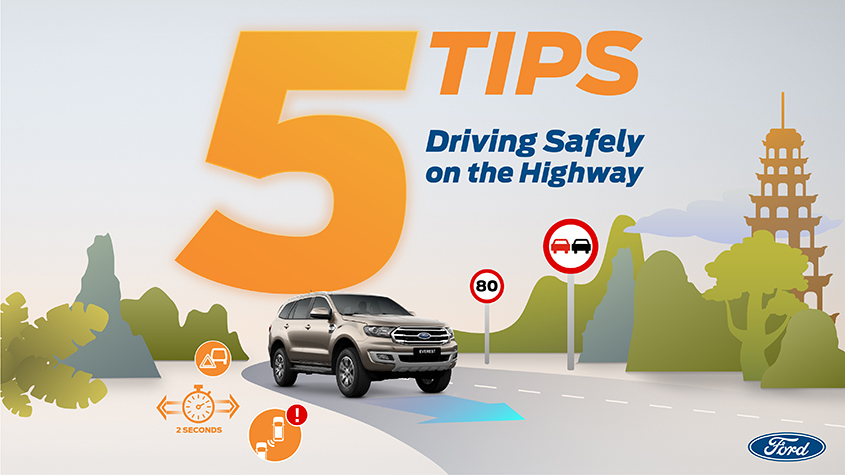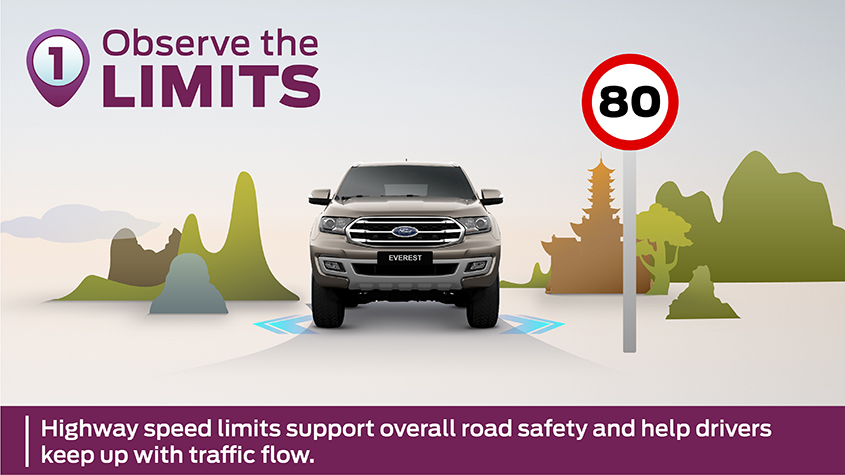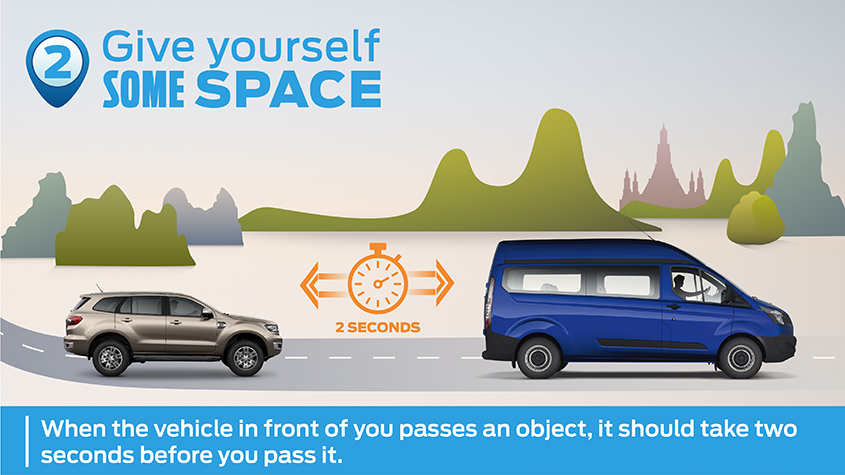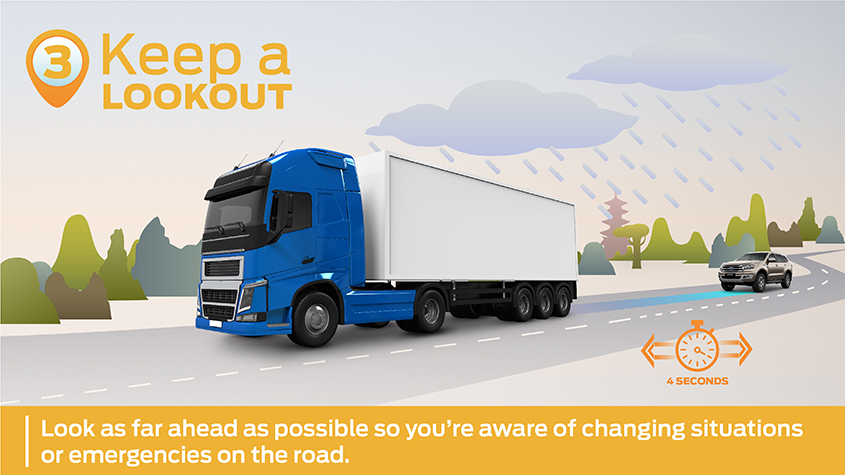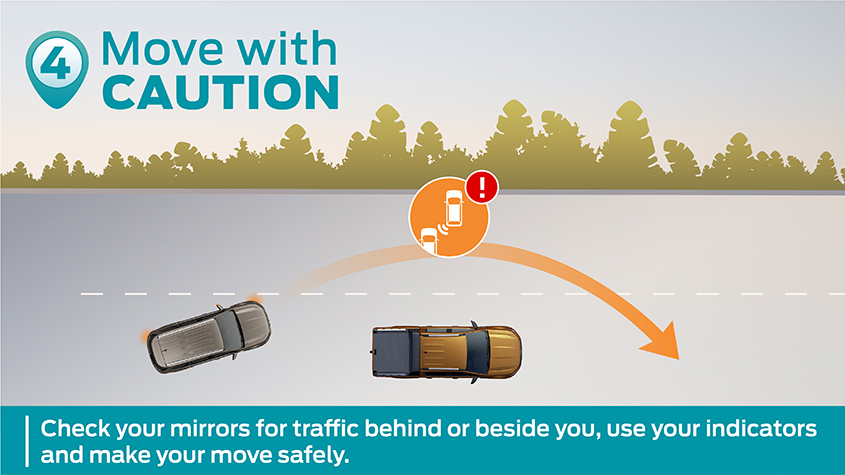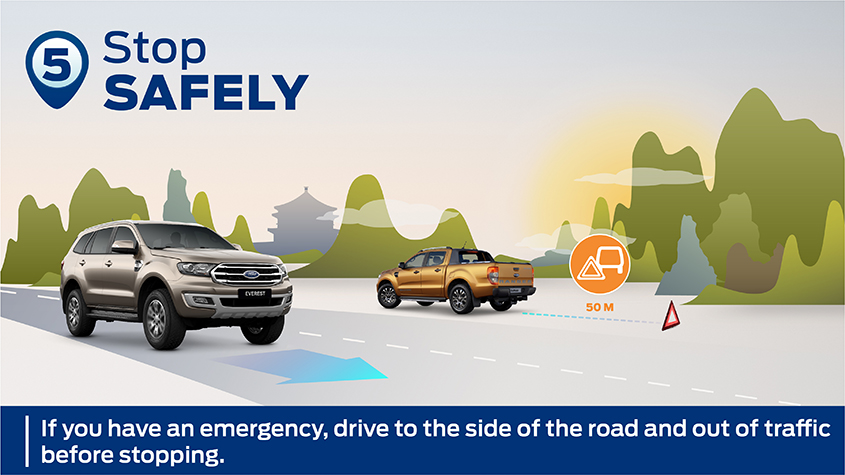How to Handle the Highways: Learning the Right Skills for Driving Safely and Confidently on the Open Road
November 3rd, 2018 Bangkok – Asia has seen accelerating economic growth in recent years, resulting in rapid road infrastructure development across the region. This means that more motorists are heading out of the congested cities and driving on newly-built highways – often in more modern, faster cars.
Driver education may not be keeping pace with the developments, however, and many drivers remain unfamiliar with handling faster cars on roads that are designed for higher traveling speeds.
Here are some ways that drivers can become more skillful and confident when travelling at high speeds on highways.
Observe the limits
Speed limits on highways are generally higher than on city and rural roads. For example, in Vietnam, the highway speed limits go up to 80km/h, while limits on other roads generally range from 40 to 60km/h. More than just an indicator of how fast you can go without breaking the law, highway speed limits also serve as a guide for keeping up with traffic flow and supporting road safety.
Give yourself some space
When following another vehicle, keep a safe distance and apply the œtwo-second rule. If the car in front of you passes an object (like a tree), it should take two seconds before you pass the same object. Modern cars like the Ford are equipped with technologies such as Anti-lock Braking System (ABS) and Electronic Stability Program (ESP) that can assist in situations where sudden braking and maneuvers are required, but you should still maintain a reasonable distance to give yourself enough time and space to react.
Keep a lookout
Look as far ahead as possible so that you are aware of what is coming up – this rule applies especially to highway driving, given the long distances involved. If visibility is restricted, such as during bad weather or if you’re following a large vehicle like a truck or a bus, you should keep an even greater distance than usual. Extend the two-second rule to three or four seconds in these instances, but at a minimum, you should be able to see what is happening beyond the vehicle that is directly in front of you.
Move with caution
Overtaking other vehicles is often necessary on highways but be sure to follow all œno overtaking signs and other traffic rules in order to execute the maneuver safely. In left-hand-drive (LHD) countries like Vietnam, vehicles travel on the rightmost lane and overtake on the left. Remember this phrase when overtaking: œmirror, signal, maneuver, which means to first check your mirrors for traffic behind or beside you, signal your intentions using your indicators, and then make your move safely. You should also turn your head to visually check your blind spot (an area which is not visible in your mirrors) to avoid potential side collisions.
Stop safely
Highway traffic is often fast flowing, so stopping your vehicle in the middle of the highway is highly dangerous and an absolute no-no. If you need to stop, seek the nearest exit and find a safe place to pull over. However, if you have an emergency, such as an issue with your car, try to drive to the side of the road and out of traffic before coming to a stop. Turn on your hazard lights and place an emergency triangle about 50 meters behind your vehicle to warn others of your presence. And keep a list of contacts, such as emergency services or the local Automobile Association, in your car, so that you can call for help if necessary.
As more and more highways are constructed across Asia, having the right skills and knowing what to do while travelling on them will become increasingly important. While it may be a different challenge from driving in the city, it need not be an intimidating experience if you follow some of these tips and practice safe driving habits.
About Ford Motor Company
Ford Motor Company is a global company based in Dearborn, Michigan. The company designs, manufactures, markets and services a full line of Ford cars, trucks, SUVs, electrified vehicles and Lincoln luxury vehicles, provides financial services through Ford Motor Credit Company and is pursuing leadership positions in electrification, autonomous vehicles and mobility solutions. Ford employs approximately 201,000 people worldwide. For more information regarding Ford, its products and Ford Motor Credit Company, please visit www.corporate.ford.com.

